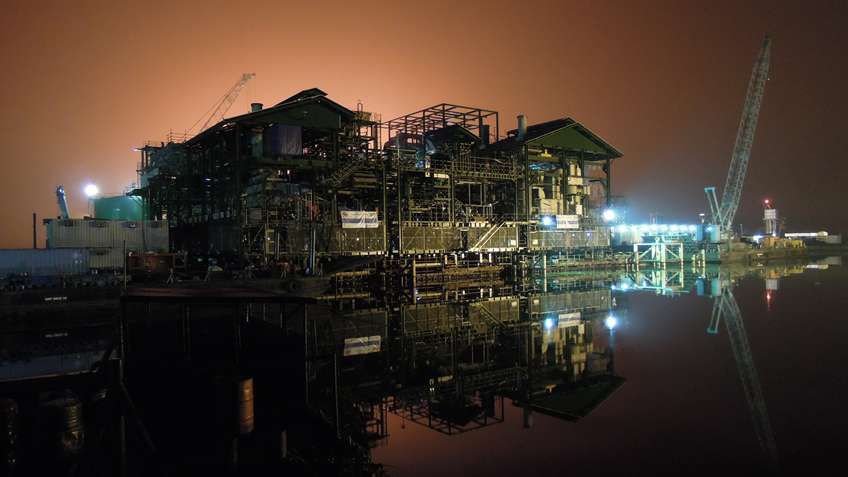Challenge
Upon extraction, the raw natural gas is saturated with water vapor and needs to be dehydrated.
Most of this water must be removed prior to the gas compression and shipment in liquid form to the storage tanks through dedicated pipelines.
The dehydration process takes place at the extraction site and, in most cases, it is achieved using glycol.
In this specific case, triethylene glycol (TEG) is deployed, since it is regenerated at a higher purity level, accepting that, during the process, the glycol has a loss at a lower vapor level with respect to other diols.
Such achievable high purity level and lower losses during the dehydration process increase efficiency and reduce process costs.
Although the equipment used for the dehydration process is generally the same, there may be relevant changes in its installation, depending on the type of sub-systems used.
For this specific project three customised packages were deployed: one for dehydration, one for glycol regeneration and another dedicated to separation at low temperature.
The units are installed as an integral part of the Otumara Node Project, with the aim of commercialising hydrocarbons that were previously burnt off.
The packages are engineered and conceived for outdoor use in hazardous areas, and are installed on a complex steel structure mounted on supports and located on one of the branches of the Niger delta.
DELIN Elettronica was involved in the early stages of the project, when the manufacturer initially thought to provide an installation based on minimal automatic control, therefore requiring standard process equipment.
The initial idea already included a Rockwell Automation system including controllers and Operator Workstations (OWS).
In 2012, the end-customer imposed standardisation which would have required a considerable evolution in the control system architecture.
The technical specifications required segregation of the hardware and software within two main systems: Process Automation System (PAS) and Safety Instrumented System (SIS).
On top of that, SIL2 compliance in accordance with TUV specifications for SIS and high availability, with CPU, communications and I/O redundancy, for both the PAS and the SIS systems were now required.
For management of smart field equipment the use of Foundation Fieldbus Technology was requested with redundant linking devices as well as redundant analog I/O cards with HART protocol.
A redundant OPC communication link to the plant DCS was requested via two industrial PCs for remote monitoring and control of operating conditions, and overall system synchronisation.

